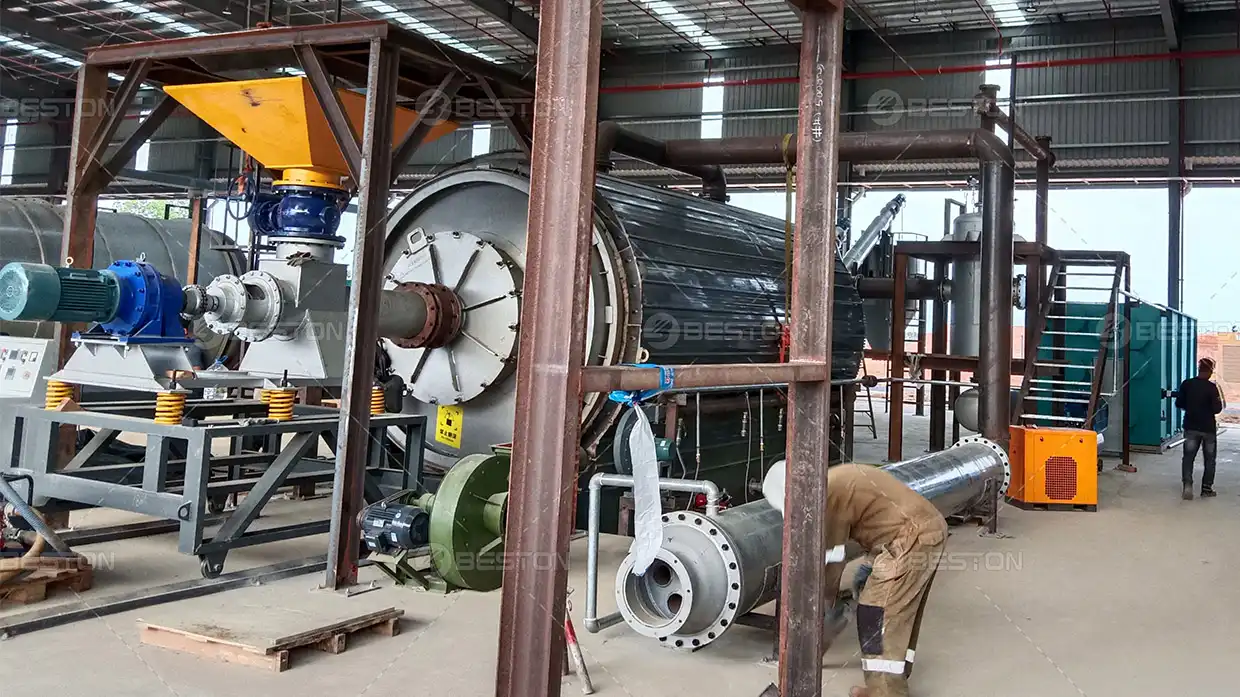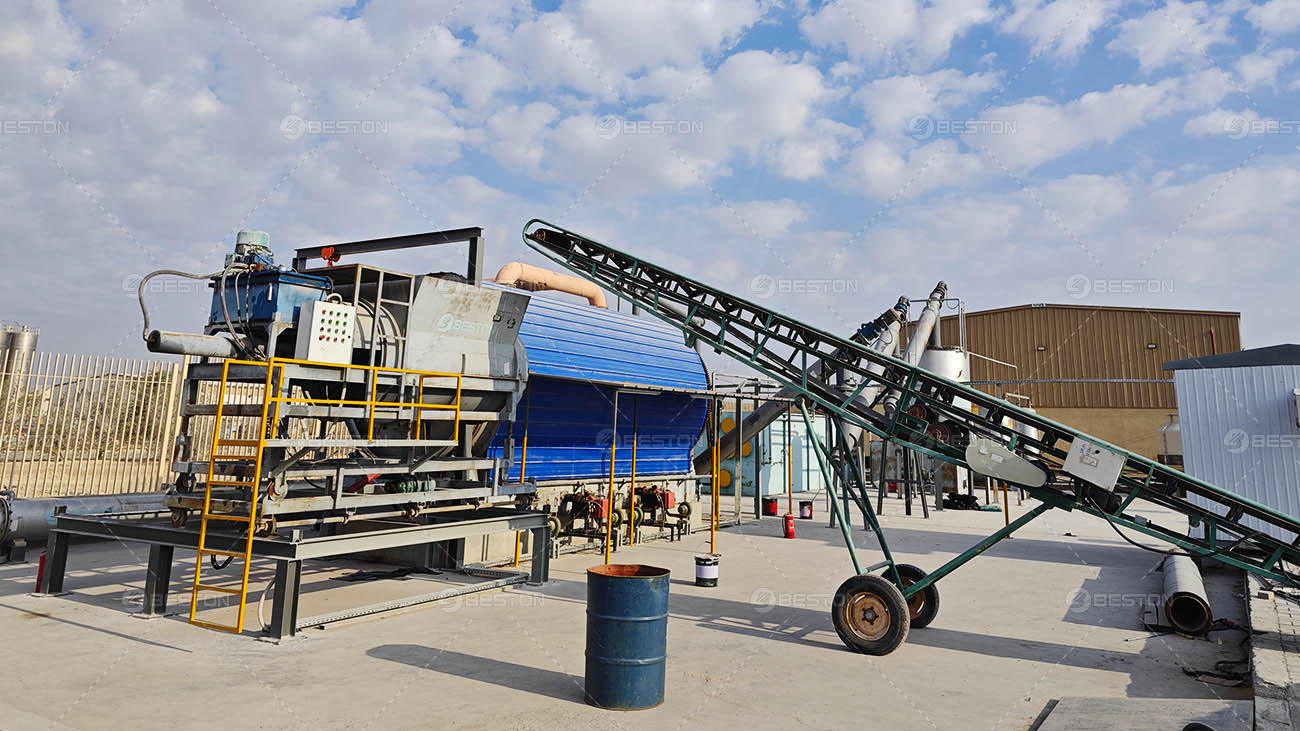A plastic pyrolysis plant represents a promising opportunity for both environmental sustainability and economic profit. Through the process of pyrolysis, plastic waste is converted into valuable byproducts such as oil, gas, and carbon black. These byproducts have multiple uses, making the plastic pyrolysis process highly versatile and economically advantageous. However, a thorough analysis of the economic benefits, particularly in terms of cost and return on investment, is essential for evaluating the viability of such a project.

Initial Investment and Plastic Pyrolysis Plant Cost
The initial cost of setting up a plastic pyrolysis plant is a key consideration for investors. The price of the plant depends on several factors, including the scale of the operation, the technology used, and the production capacity. Generally, a larger plant with a higher processing capacity will have a higher upfront cost. For smaller-scale operations, the investment can range from hundreds of thousands to millions of dollars.
Beyond the initial capital expenditure, other costs such as operational expenses, maintenance, and energy consumption should also be factored into the overall plastic pyrolysis plant cost. Efficient plant design and energy recovery systems can reduce these operating costs significantly. For instance, the energy produced during the pyrolysis process can be used to power the plant, reducing dependence on external energy sources and enhancing profitability.
Revenue Generation from Byproducts
One of the primary economic benefits of a plastic pyrolysis plant is its ability to generate multiple streams of revenue from the byproducts produced during pyrolysis. The main byproducts include:
- Pyrolysis oil: This liquid byproduct can be refined and used as a substitute for traditional fuels such as diesel and gasoline. It can be sold to industries requiring fuel for energy generation or used as a feedstock for chemical production.
- Carbon black: Produced during the pyrolysis of plastic, carbon black is widely used in manufacturing rubber, plastic, and as a pigment in coatings. Its high demand in the industrial sector offers a lucrative market opportunity.
- Pyrolysis gas: The gas generated during pyrolysis can be captured and used as fuel for the plant itself, reducing energy costs and improving the sustainability of the operation.
The revenue generated from these byproducts can offset the initial investment and operating costs, making the plastic pyrolysis machinery a profitable venture in the long term.
Return on Investment and Profit Margins
The return on investment (ROI) for a plastic pyrolysis plant depends on several factors, including the market prices of the byproducts, the efficiency of the plant, and the volume of plastic waste processed. A well-operated plastic to fuel machine can generate significant revenue, with profit margins increasing as the efficiency of the process improves.
For example, the oil produced from plastic pyrolysis can be sold at competitive prices depending on the local energy market. In many regions, there is a growing demand for alternative fuels due to the increasing costs and environmental concerns surrounding fossil fuels. This makes pyrolysis oil a viable option for energy producers, offering a steady revenue stream.
Similarly, carbon black’s market value is driven by its use in rubber and plastic industries. As industrial production continues to grow, especially in developing countries, the demand for carbon black is expected to rise, providing a profitable avenue for businesses utilizing plastic pyrolysis.
The sale of pyrolysis gas can also reduce operational costs by providing a renewable source of energy for the plant. By using this gas to power the pyrolysis reactor and other plant operations, energy expenses can be minimized, further improving the overall profitability of the project.
Environmental and Social Benefits Leading to Market Advantage
The environmental benefits of plastic pyrolysis cannot be understated. By converting plastic waste into useful products, the process reduces the amount of plastic that ends up in landfills or oceans. This contributes to waste reduction and environmental protection, which can lead to favorable public relations for companies involved in plastic pyrolysis projects.
In addition, the ability to offer an eco-friendly solution to plastic waste management can attract environmentally conscious consumers and investors. As governments and industries across the globe increasingly prioritize sustainability and carbon footprint reduction, businesses that invest in green technologies like plastic pyrolysis are positioned to capitalize on the growing demand for eco-friendly products.

Government Incentives and Regulatory Support
Many governments worldwide are offering incentives for sustainable waste management projects, including plastic pyrolysis. These incentives may come in the form of tax breaks, subsidies, or grants that reduce the financial burden of setting up and operating a plastic pyrolysis plant. Regulatory support, such as extended producer responsibility (EPR) laws, can further encourage businesses to adopt plastic pyrolysis technologies as a means of reducing plastic waste and fulfilling compliance requirements.
Conclusion
The economic benefits of a plastic pyrolysis plant are significant and multifaceted. While the initial plastic pyrolysis plant cost may be substantial, the potential for revenue generation from byproducts like pyrolysis oil, carbon black, and pyrolysis gas makes the project financially viable in the long term. Additionally, the environmental and regulatory advantages of plastic pyrolysis contribute to its attractiveness as a sustainable business opportunity. When managed effectively, a plastic pyrolysis plant can offer substantial returns on investment, improved profit margins, and contribute to the global effort to reduce plastic waste.